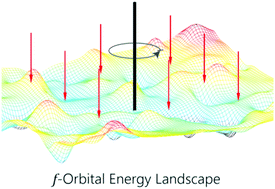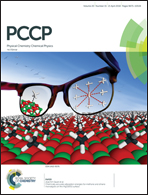Metastable electronic states in uranium tetrafluoride†
Abstract
The DFT+U approach, where U is the Hubbard-like on-site Coulomb interaction, has successfully been used to improve the description of transition metal oxides and other highly correlated systems, including actinides. The secret of the DFT+U approach is the breaking of d or f shell orbital degeneracy and adding an additional energetic penalty to non-integer occupation of orbitals. A prototypical test case, UO2, benefits from the +U approach whereby the bare LDA method predicts UO2 to be a ferromagnetic metal, whereas LDA+U correctly predicts UO2 to be insulating. However, the concavity of the energetic penalty in the DFT+U approach can lead to a number of convergent “metastable” electronic configurations residing above the ground state. Uranium tetrafluoride (UF4) represents a more complex analogy to UO2 in that the crystal field has lower symmetry and the unit cell contains two symmetrically distinct U atoms. We explore the metastable states in UF4 using several different methods of selecting initial orbital occupations. Two methods, a “pre-relaxation” method wherein an initial set of orbital eigenvectors is selected via the self-consistency procedure and a crystal rotation method wherein the x, y, z axes are brought into alignment with the crystal field, are explored. We show that in the case of UF4, which has non-collinearity between its crystal axes and the U atoms' crystal field potentials, the orbital occupation matrices are much more complex and should be analyzed using a novel approach. In addition to demonstrating a complex landscape of metastable electronic states, UF4 also shows significant hybridization in U–F bonding, which involves non-trivial contributions from s, p, d, and f orbitals.



 Please wait while we load your content...
Please wait while we load your content...